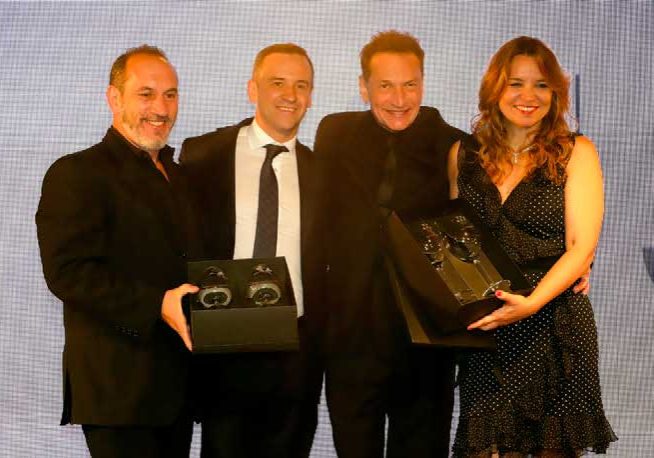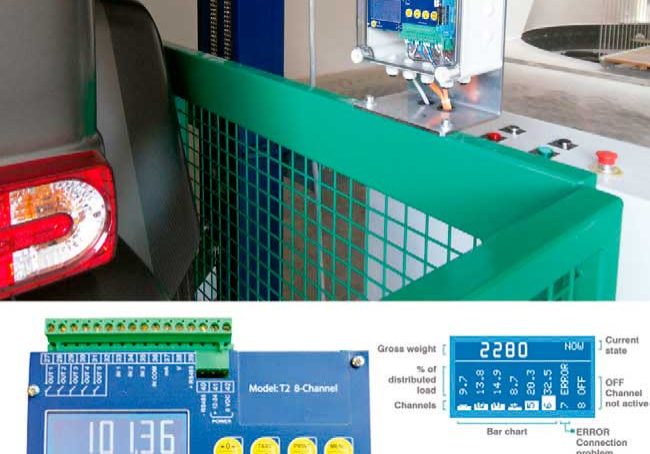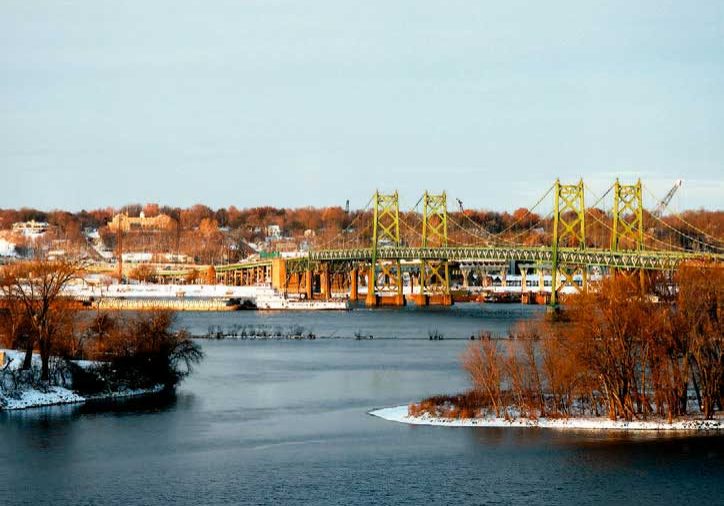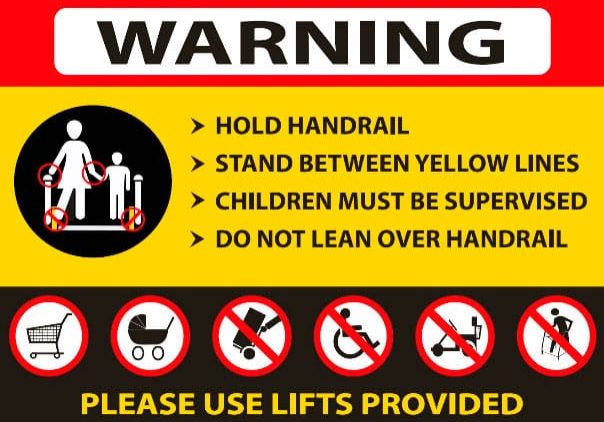OEMs and independents paint a picture of the Midwest that reveals market trends that promise to drive steady growth for years to come.
Chicago has three of the 10 tallest buildings in the U.S.: 875 North Michigan Avenue (formerly John Hancock Center), Aon Center and Willis Tower. These buildings are 1,128 ft. tall, built in 1976 with an Otis elevator system; 1,136 ft. tall, built in 1973 with a Schindler system; and 1,451 ft. tall, built in the 1970s with an Otis system, respectively. With a presence in Chicago dating back to the early part of the 20th century (often via predecessor companies they acquired), the big OEMs maintain a strong Chicagoland presence to this day. Many have North American headquarters there.
Without question, Chicago is a hotspot of tall-building activity, with scores of projects rising and planned. OEMs, independents and suppliers are reaping the rewards as downtown becomes an ever-more-attractive place to live, work and play. In addition to new construction, historic buildings are being modernized with new vertical-transportation (VT) systems, such as Chicago’s Willis Tower, which is undergoing a multi-hundred-million-dollar overhaul that includes a modernized VT system from Otis.
The downtown revitalization phenomenon is hardly unique to Chicago, however. It’s going on throughout the Midwest, in cities primarily characterized by tall buildings and those with skylines closer to the ground. Beyond this, companies say they are handling a significant amount of work related to infrastructure across the region. With a presence in the Midwest for more than a century, Otis has nearly 1,500 employees in 22 branch offices throughout the region. The majority of its work is with property managers and general contractors. “While we do a significant amount of maintenance and modernization business, we’ve also seen solid new-equipment sales in the Midwest,” Regional General Manager Crawford Green says. “The outlook for the Midwest is positive.”
Headquartered in St. Louis with offices in Kansas City, Missouri, and Columbus, Ohio, Midwest Elevator Co., Inc. has had a “very, very strong” past three years, says President Gary Schuette, who is also 2019 president of the National Association of Elevator Contractors. The primary business driver lately has been modernization projects for existing clients, many in the healthcare industry. “Right now, it seems like we’re getting a lot more traction in modernization sales outside of healthcare, and I think we are going to have a pretty strong 2019,” Schuette says. “We are cautiously optimistic.” Brent Snyder, Midwest Elevator Kansas City branch manager, provided a breakdown of the type of work the company provided in 2018. It consisted of:
- 47% maintenance and testing
- 29% modernization
- 15% new installation
- 9% repair
Snyder tells ELEVATOR WORLD that that breakdown remains pretty consistent over the years. Of that, he says, 68% of its work was performed in commercial office buildings managed by third-party property management firms, 18% in hospitals, 9.4% in multifamily residential properties, 2.4% in airports and 2.2% in industrial facilities, though the company expects growth related to industrial warehouse space to gain momentum. “Being in the middle of the country, Midwest cities are able to offer unique access to railways, airports and trucking companies to help meet the needs of large, online retailers whose customers expect quick delivery,” Snyder observes.
Midwest Elevator is hiring, adding several field personnel in Kansas City and a salesperson in Columbus to its payroll of 130, Schuette says. “I think we’ll be able to maintain our existing status in St. Louis,” Schuette says. “Whatever comes at us in 2019, I think, overall, we’ll be able to handle it with our existing workforce and a couple new hires.”
OEMs and independents alike tell EW that business is strong across the region across product lines. They are positive about the rest of this year and beyond. Schindler’s Senior Vice President of New Installations Mike Ramandanes points to 7Seventy7, a US$100-million, 35-story luxury residential development in downtown Milwaukee overlooking Lake Michigan, as a prime example of the downtown revitalization trend. He observes:
“Not too long ago, Milwaukee was a struggling city. It had empty downtown avenues and a sprawling suburban population. The city was suffering from a classic case of the closing of factories and plants that had been its lifeblood during the World War II era and the years following it. Around the 1970s, a push toward urban renewal began. Fast forward to today. In the past few years alone, the downtown Milwaukee area has seen a true resurgence, with thousands of apartments and office space in towers popping up left and right.”
Developed by Northwestern Mutual, 7Seventy7 and its parking garage are served by three Schindler 7000 high-rise and three 5500 midrise machine-room-less (MRL) elevators. Ramandanes says such projects are happening throughout the Midwest, and that’s not going to stop: “Cities have been attempting to revitalize and grow their downtown markets over the past 10-20 years. Living in the heart of the city is encouraged.”
Renovation of historic buildings is a big part of the initiative of the City of St. Louis to attract visitors, residents and businesses to the downtown area, says Midwest Elevator Sales Representative Valerie Gaadt. A great example, she says, is the renovation at 705 Olive Street, former home of Union Trust Co. that is now Hotel St. Louis, a Marriott Autograph Collection hotel. For that project, Midwest Elevator modernized three geared traction elevators and installed one hydraulic elevator. Hollister-Whitney Elevator Corp. machines with GALaxy controllers were used in the three-elevator modernization. Equipment from Canton Elevator and Motion Control Engineering (MCE) was used in the new hydraulic installation. Gaadt observes:
“The project required careful consideration to preserve the historical aspects of the building. The elevators complement a flnished lobby that is beautifully detailed. Dial position indicators and custom hall doors were used in the lobby to preserve the look and feel of the original design.”
Midwest downtowns are changing, with tenant makeup undergoing a shift, according to Gaadt: “In Midwest cities, we’ve seen more new office developments being built in the suburbs where land is more affordable and tax credits are more lucrative.” In most cases, she says, these new suburban developments blend low-rise office, multifamily and retail space. Despite the negative effect this trend has had on city centers, Gaadt acknowledges that downtowns are making a comeback as older office buildings are converted into not only hotels, but also apartments/ condominiums that appeal to millennials. She observes:
“Typically, elevators are included in those designs. In the past year, we’ve started to see the return of high-rise buildings being built in Midwest cities but not at the rate they were in the 1970s-1990s. Overall, the modernization market has thrived as these 30- to 40-year-old buildings continue to age, and that market should continue to sustain its growth in comparison to high-rise projects.”
Downtowns are being reborn, even in cities such as Detroit, which has been dealt more than its fair share of economic blows over the past several decades. Ramandanes is among those who are optimistic about projects such as a 912-ft.-tall mixed-use skyscraper on the former J.K. Hudson’s department store site downtown (EW, December 2018). Being developed by Bedrock LLC to include residences and possibly a hotel, the project is already generating work for VT companies, with Barker Mohandas LLC signing on as VT consultant.
Demolition to make way for the approximately 84-story structure was well underway as 2018 drew to a close. “Several years ago, we saw several stalled projects in Detroit,” Ramandanes says. “At the end of 2018 going into 2019, some of these projects are starting to break ground. Money is being released, and projects are moving forward.” Ramandanes says he’s excited about not just Hudson’s, but “Detroit in general.”
Establishing its presence in the Midwest with the acquisitions of Westinghouse and Haughton in the 1920s, Schindler has its North American headquarters in Chicago. Across the region, more than 1,000 employees handle jobs that essentially reflect its total North American portfolio. Ramandanes says:
“Our work is pretty diverse throughout the Midwest across all segments. Due to large market volume, we are most heavily weighted toward private general-contractor projects in the residential and hotel sectors. With that said, though, we’ve seen some signiflcant transit jobs and airport projects pop up the past few years. Minneapolis-St. Paul International Airport is an example of that. We installed equipment for a nice expansion they had. We also provided elevators for the CONRAC (consolidated rental-car facility) expansion at [Chicago O’Hare International Airport].”
KONE’s Midwestern roots can be traced to the Quad Cities (five cities in northwest Illinois and southeastern Iowa) and to Moline, Illinois, in particular. Moline was home to Montgomery Elevator Co., which KONE acquired in 1994. KONE Director of Marketing and Communications Patrick O’Connell says the Quad Cities is home to service operations, technical training, spare parts and escalator production facilities for KONE North America. Its North American headquarters are in Lisle, Illinois, a western suburb of Chicago.
Across the Midwest region, KONE has approximately 500 employees. O’Connell says work across the region is a “healthy mix of new construction, service and modernization” projects. In Midwest cities lacking tall towers, KONE provides low- and mid-rise solutions such as MRL elevators for multifamily housing, hotel and office complexes. “Our work spans a variety of industries and clients, from large stadiums and airports to the type of hotels you find along Interstate 80 to Class A office space and high-end residential developments,” O’Connell says.
Ramandanes says Schindler has seen an extended period of healthy construction activity across the market for approximately eight years now. As for this year? “We do see some plateauing or slight pullback going into 2019 but still project an overall strong market going forward,” he says, continuing:
“We are still seeing numerous large projects continue to proceed through the design/development stage and break ground throughout the whole region. There are signiflcant high-rise works in Chicago, and Indianapolis, Milwaukee and Detroit are also showing no signs of slowing down anytime soon.”
Despite general optimism, there are points of worry, including tariffs on trade partners such as China that affect VT manufacturing. Otis and National Elevator Industry, Inc. (NEII®) President Tom Vining testified to Congress about the tariffs in August 2018 (EW, November 2018). Schuette says independents are being affected, too:
“We do see various suppliers increasing their prices, including some who haven’t increased their prices in quite a while. We have seen an increase in materials prices, and that is trickling down. As for our own business [Midwest Elevator], I don’t think it’s impacted us terribly, but it could in the future. Many times, what’s hitting the marketplace and the economy right now seems to impact the elevator industry a little slower.”
Throughout the region, customers are looking for ways to differentiate their transportation offerings, and that includes a growing aptitude for technology, O’Connell says: “Innovation is a key enabler of a different experience for our customers.”
While Midwestern customers are slower to jump on the technology bandwagon than their larger, coastal counterparts, Midwest Elevator is starting to see more and more projects that incorporate the latest bells and whistles, Gaadt says. “In general, Midwesterners tend to be more conservative in their approach to spending on ‘features’ and take into consideration the risk/reward of such technology,” Gaadt says. “Midwesterners like to see technologies prove themselves over time.”
When it comes to modernizations of icons like Willis Tower, customers are embracing technology. Otis tells EW that, during the first phase of the project, all existing elevators were successfully upgraded with the CompassPlus® destination-dispatch system.
Otis’ advanced SkyRise® elevator system is also being used. When the modernization was announced by Equity Office and Otis, Equity Office Senior Vice President David Moore said the tower’s 15,000-plus daily users “deserve the absolute best in transportation within the building, from updated technology to sleek design…… ”
O’Connell agrees that VT users deserve and are asking for the “absolute best,” stating:
“Our KONE turnstiles have seen large installations in Chicago and a Kansas City property, for example, providing users in those buildings a new way to interact with elevators to efficiently reach their destination floors.”
Across the board, VT companies project steady growth throughout the region. “We’re excited about the Midwest and our future in serving customers there,” KONE’s O’Connell says. “We expect to continue to have a healthy mix of new construction, modernization and service work across the geography.”
Get more of Elevator World. Sign up for our free e-newsletter.










